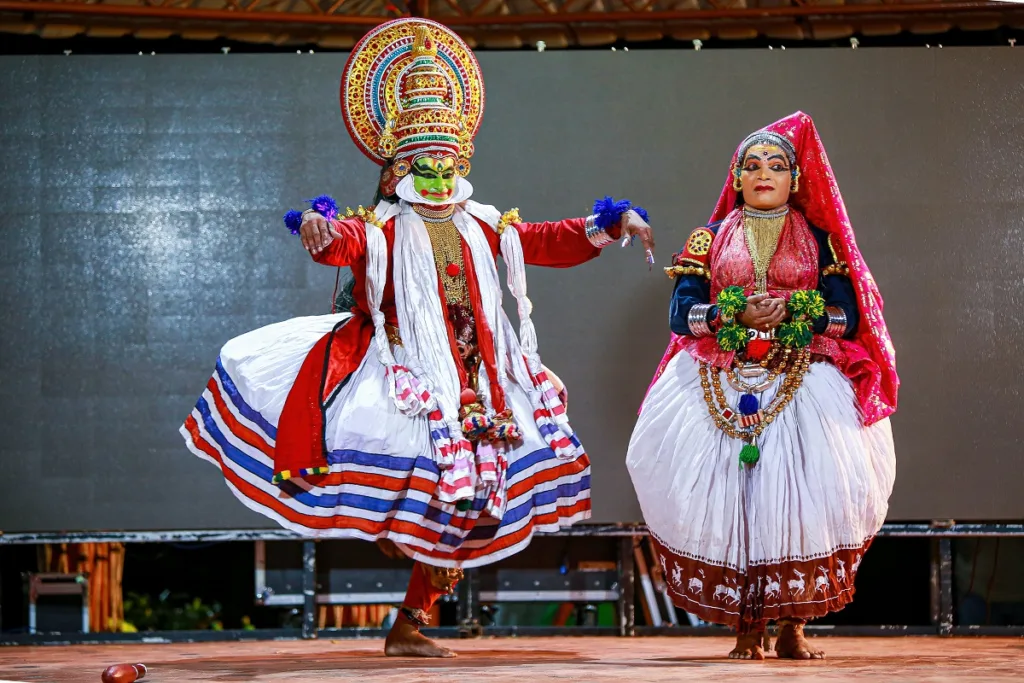In a country known for its rich cultural heritage, classical dance forms in India hold a special place. These art forms encapsulate the essence of centuries-old traditions and tales, embodying grace, rhythm, and storytelling. From the intricate mudras of Bharatanatyam to the lyrical expressions of Kathak, the Indian classical dance forms are a treasure trove of artistic expression and cultural significance.
- Understanding the Roots of Indian Classical Dance
Before delving into the diverse styles, it’s essential to know more about classical dances of India and grasp the roots of Indian classical dance. With origins deeply entrenched in ancient texts like the Natya Shastra, these dance forms were initially performed in temples, depicting mythological stories and spiritual concepts. Over the years, they evolved, integrating regional influences and cultural nuances, resulting in a beautiful amalgamation of tradition and innovation.
- The Enigmatic Elegance of Bharatanatyam
Bharatanatyam, which originated in Tamil Nadu, is one of India’s oldest and most prominent classical dance genres. Its hypnotic combination of perfect footwork, nuanced hand gestures, and passionate facial expressions exemplifies the grace and beauty of Indian classical dance. Bharatanatyam continues to attract audiences throughout the world with its extravagant costumes and intriguing storylines.
- The Resplendent Storytelling of Kathak
Originating from the northern regions of India, Kathak is a dance form that beautifully combines storytelling with rhythmic footwork. Known for its intricate spins, swift movements, and elaborate costumes, Kathak weaves tales of love, devotion, and mythology. This classical dance of India not only embodies grace but also showcases the fusion of Hindu and Islamic cultures, making it a symbol of India’s diverse heritage.
- The Captivating Charisma of Odissi
Hailing from the eastern state of Odisha, Odissi is a dance form characterized by its fluid movements and captivating postures. With its emphasis on expressing a range of emotions, Odissi narrates stories from Hindu mythology, bringing to life the tales of love, devotion, and valor. Its intricate hand gestures, vibrant costumes, and soulful music create an enchanting experience for both the performer and the audience.
- The Euphoric Expressions of Kathakali
Traveling to the southern state of Kerala, one encounters the enthralling world of Kathakali. Known for its elaborate makeup, vibrant costumes, and vigorous movements, Kathakali is a classical dance of India drama that narrates stories from Indian epics. With its larger-than-life characters and dramatic facial expressions, Kathakali embodies the essence of Indian folklore and mythology, leaving a lasting impression on all who witness its grandeur.
- The Sublime Serenity of Mohiniyattam
Originating from the picturesque state of Kerala, Mohiniyattam is a dance form that exudes elegance and grace. Characterized by its subtle movements, delicate gestures, and lyrical expressions, Mohiniyattam is often referred to as the “Dance of the Enchantress.” With its emphasis on storytelling and spirituality, this classical dance of India embodies the beauty and serenity of the female form, captivating audiences with its mesmerizing charm.
- Exploring More Classical Dances of India
Beyond the aforementioned classical dance forms, India boasts a rich tapestry of other expressive traditions. The vibrant and energetic Manipuri dance from Manipur, the dynamic and rhythmic Kuchipudi from Andhra Pradesh, and the traditional and folk-inspired Sattriya from Assam are some of the notable styles that contribute to the diverse landscape of classical dance of India. Each of these dance forms carries its own unique history, movements, and cultural significance, adding to the kaleidoscope of India’s rich performing arts heritage.
- Embracing the Cultural Heritage
While this classical dance of India forms have evolved over the centuries, its essence remains deeply rooted in Indian culture and tradition. From temple rituals to royal courts, these art forms have transcended time, preserving the heritage and stories of a bygone era. By embracing and promoting these classical dance of India forms, India celebrates its rich cultural legacy, captivating the world with the timeless beauty and grace of classical dance of India.
Conclusion
The art of classical dance in India is a testament to the country’s vibrant cultural tapestry. Through its intricate movements, expressive storytelling, and captivating performances, it not only entertains but also educates and inspires, leaving an indelible mark on those who witness its splendor. Let us continue to embrace and cherish this invaluable heritage, ensuring that the timeless grace of Indian classical dance remains in motion for generations to come.

